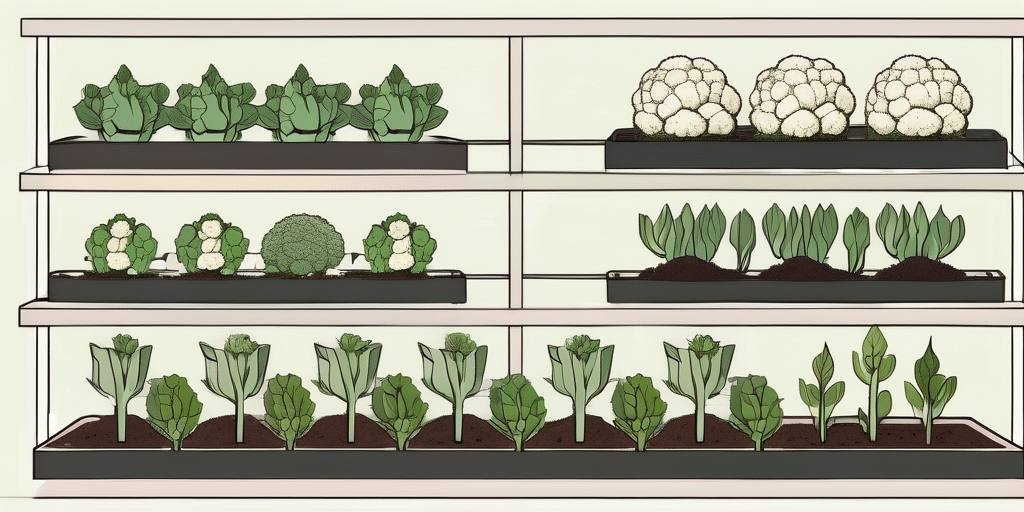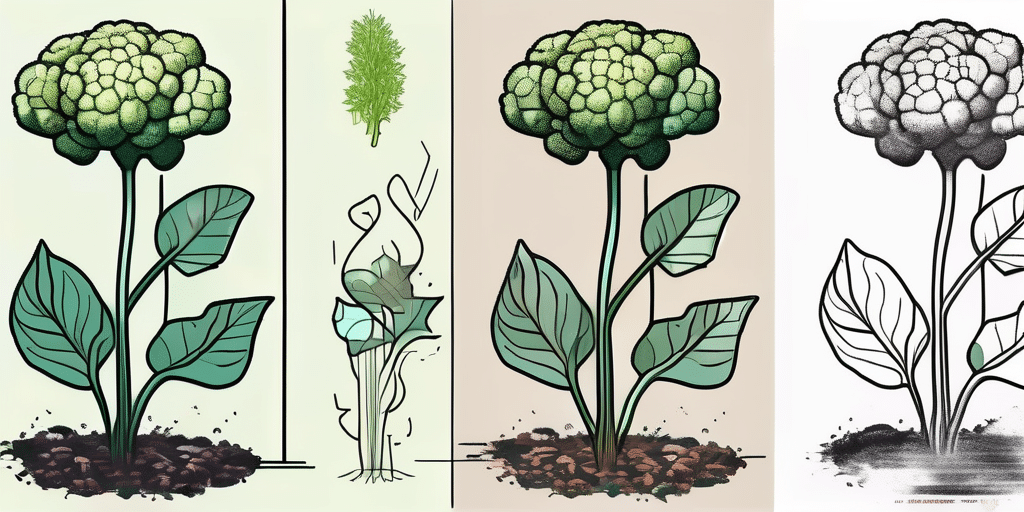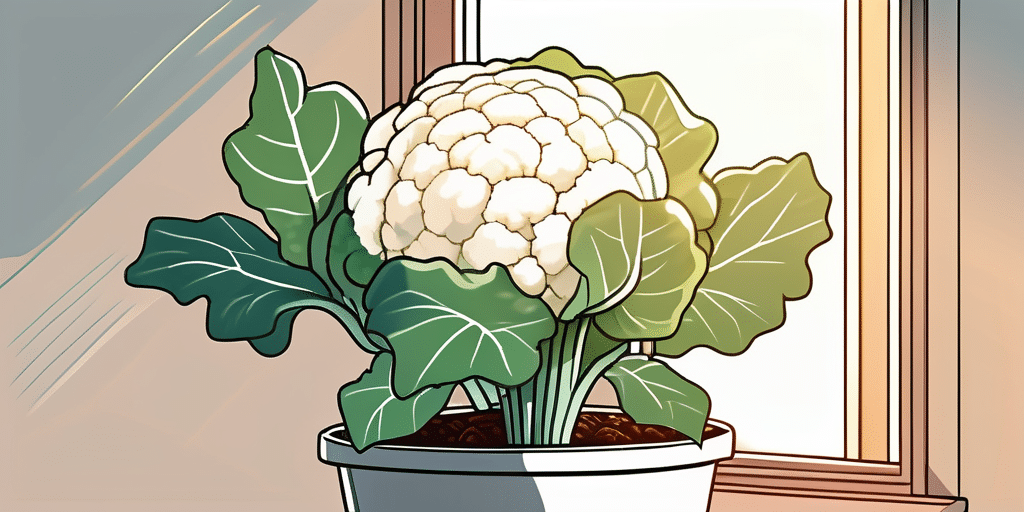Graffiti cauliflower is a unique variety of cauliflower that adds a splash of color to your garden and plate. With its vibrant purple heads, it’s sure to be a conversation starter at your next dinner party. If you’re a gardener in Michigan, you might be wondering when to plant and how to grow this eye-catching vegetable. In this article, we’ll guide you through the process, step by step.
Climate & Hardiness Zones in Michigan
Before you start growing graffiti cauliflower in Michigan, it’s important to consider the climate and hardiness zones in your area. Michigan is divided into several hardiness zones, which are based on the average minimum winter temperature. Knowing your hardiness zone is crucial for determining the best time to plant your cauliflower.
The majority of Michigan falls within zones 4 to 6, with some parts of the Upper Peninsula classified as zone 3. These zones have an average minimum winter temperature ranging from -30°F (-34°C) to -10°F (-23°C).
Michigan’s diverse climate is influenced by the Great Lakes, which have a moderating effect on temperatures. The state experiences four distinct seasons, with cold winters and warm summers. The western part of Michigan tends to have milder winters compared to the eastern side, thanks to the lake effect from Lake Michigan.
When choosing cauliflower varieties to grow in Michigan, consider the length of the growing season in your specific zone. Cauliflower typically thrives in cool weather and requires consistent moisture to develop properly. Planting in early spring or late summer can help avoid the heat stress that may affect cauliflower heads.
When to Plant Graffiti Cauliflower in Michigan
Now that you’ve determined your hardiness zone, it’s time to figure out when to plant graffiti cauliflower in Michigan. Cauliflower is a cool-season crop, meaning it thrives in cooler temperatures. In Michigan, you have two primary planting seasons for cauliflower – spring and fall.
Spring Planting: Cauliflower can be started indoors 4 to 6 weeks before the last frost date in your area. Transplant the seedlings into the garden 2 to 4 weeks before the last frost date. The ideal soil temperature for transplanting is around 60°F (15°C).
When starting cauliflower indoors, it’s essential to provide adequate light and maintain a consistent temperature for optimal growth. Consider using grow lights or placing the seedlings near a sunny window to ensure they receive enough light to develop strong, healthy stems.
Fall Planting: If you miss the spring planting window, don’t worry! Cauliflower can also be planted in late summer for a fall harvest. Start the seeds indoors 10 to 12 weeks before the first expected frost date in your area. Transplant the seedlings into the garden around 6 to 8 weeks before the first expected frost date.
When planting cauliflower in the fall, pay attention to the soil moisture levels as the weather transitions from summer to autumn. Adequate watering is crucial to help the plants establish strong root systems before the colder temperatures set in. Consider adding a layer of mulch around the base of the cauliflower plants to help retain soil moisture and regulate soil temperature as the season progresses.
How to Grow Graffiti Cauliflower in Michigan
Graffiti cauliflower, with its vibrant purple heads, can be a stunning addition to your garden in Michigan. To ensure a successful harvest, it’s important to provide the right conditions and care for these colorful vegetables. Here are some essential tips to help you grow your own graffiti cauliflower:
- Choose a suitable location: When selecting a spot in your garden for your graffiti cauliflower, opt for a sunny area that receives at least 6 hours of direct sunlight daily. This will help the plants thrive and produce those eye-catching purple heads. Additionally, make sure the soil in this location is well-draining and fertile, with a pH level between 6.0 and 7.0. This will provide the cauliflower with the ideal environment for growth.
- Prepare the soil: Before planting your graffiti cauliflower seedlings, it’s important to prepare the soil properly. Work organic matter, such as compost or well-rotted manure, into the soil. This will not only improve drainage but also provide essential nutrients to the plants. By creating a nutrient-rich soil bed, you are setting the stage for healthy and robust cauliflower plants.
- Planting: Once the soil is prepared, it’s time to transplant your graffiti cauliflower seedlings. Dig small holes in the soil, spacing them about 18 to 24 inches apart. Gently place the seedlings into the holes, making sure the crown of the plant is level with the soil surface. After planting, water the seedlings thoroughly to help them settle into their new home.
- Watering: Adequate watering is crucial for the success of your graffiti cauliflower. Keep the soil consistently moist, but be careful not to overwater and create waterlogged conditions. Aim to provide about 1 inch of water per week, either through rainfall or irrigation. It’s best to water deeply, allowing the water to penetrate the soil, rather than frequent shallow watering. This will encourage the cauliflower to develop strong roots and healthy heads.
- Fertilization: To support the growth of your graffiti cauliflower, it’s recommended to apply a balanced vegetable fertilizer according to the package instructions. This is usually done every 4 to 6 weeks throughout the growing season. However, be cautious not to overdo it with nitrogen fertilizer, as this can promote excessive leafy growth instead of the development of cauliflower heads. Strike the right balance to ensure a bountiful harvest.
- Pest and disease control: As with any garden plants, graffiti cauliflower can be susceptible to pests and diseases. Regularly monitor your plants for common culprits such as aphids, cabbage worms, and slugs. If you notice any signs of infestation, consider using organic pest control methods or consult with your local cooperative extension for appropriate recommendations. By staying vigilant, you can protect your cauliflower from potential threats and ensure their healthy growth.
- Harvesting: Patience is key when it comes to harvesting your graffiti cauliflower. These colorful delights typically take around 60 to 80 days from transplanting to reach maturity. When the heads are firm, dense, and brightly colored, it’s time to harvest. Using a sharp knife or shears, cut the heads from the main stem, leaving a few leaves attached for protection. Enjoy the fruits of your labor in the form of delicious and visually striking graffiti cauliflower!
By following these tips and providing the necessary care, you can successfully grow graffiti cauliflower in the Michigan climate. With their vibrant purple heads adorning your garden, these unique vegetables are sure to be a conversation starter and a feast for the eyes. So, roll up your sleeves, get your gardening tools ready, and embark on this colorful cauliflower-growing adventure!
When to Harvest or Pick Graffiti Cauliflower in Michigan
Knowing when to harvest graffiti cauliflower is crucial to enjoy the best flavor and texture. Here are some tips to help you determine the right time to pick your colorful cauliflowers:
- Head development: Watch for the cauliflower heads to reach maturity. They should be tight and compact, with no signs of flowering.
- Color: Graffiti cauliflower should display a vibrant purple hue when it’s ready for harvest. The color can vary, but a deep, uniform purple indicates peak ripeness.
- Size: The heads should be of a suitable size, typically around 6 to 8 inches (15 to 20 cm) in diameter. If the heads get too large, they may become tough or lose their vibrant color.
- Timing: Harvest your graffiti cauliflower in the morning when the heads are cool and the dew has dried. This helps preserve the freshness and quality of the harvest.
Frequently Asked Questions
Here are the answers to some common questions about growing graffiti cauliflower in Michigan:
- 1. Can I grow graffiti cauliflower in containers? Yes, graffiti cauliflower can be grown in containers as long as the containers are large enough to accommodate the plants’ root systems.
- 2. How do I protect my cauliflower from pests? You can protect your plants from pests by using row covers, applying organic insecticides, or introducing beneficial insects such as ladybugs or lacewings.
- 3. Can I save cauliflower seeds for next year? Yes, you can save cauliflower seeds for future plantings. Allow a small portion of your plants to fully mature and produce seed heads. Harvest the seeds once they turn brown and fully dry on the plant.
- 4. What are some good companion plants for graffiti cauliflower? Good companion plants for cauliflower include beets, carrots, celery, dill, and mint. Avoid planting cauliflower near other brassicas, such as broccoli or cabbage, to minimize the risk of cross-pollination.
Growing graffiti cauliflower in Michigan can be a rewarding experience. Not only will you have a visually stunning addition to your garden, but you’ll also enjoy the sweet, nutty flavor of this colorful vegetable. By following the planting and care tips outlined in this article, you’ll be on your way to a successful harvest. Happy gardening!
Join the How to Grow Everything Community
Ready to take your gardening skills to the next level? Subscribe for free to How to Grow Everything and learn how to build the garden of your dreams! Receive personalized gardening advice tailored to your Michigan grow zone, experience level, and interests. Our family is committed to helping you grow not just graffiti cauliflower, but everything your green thumb desires. With our special offers and expert tips, you’ll get the best gardening insights delivered straight to your inbox—100% free. Join our community today and transform your garden into a vibrant, colorful oasis!






